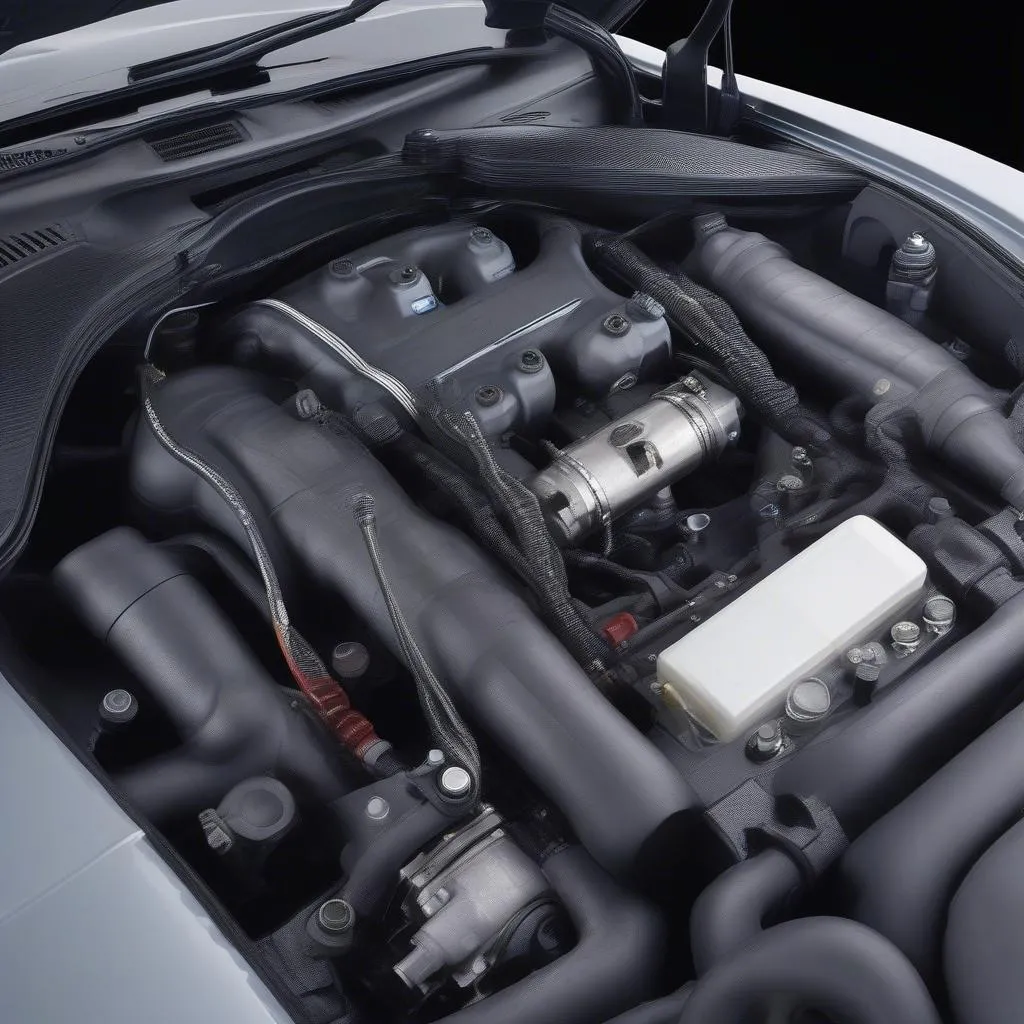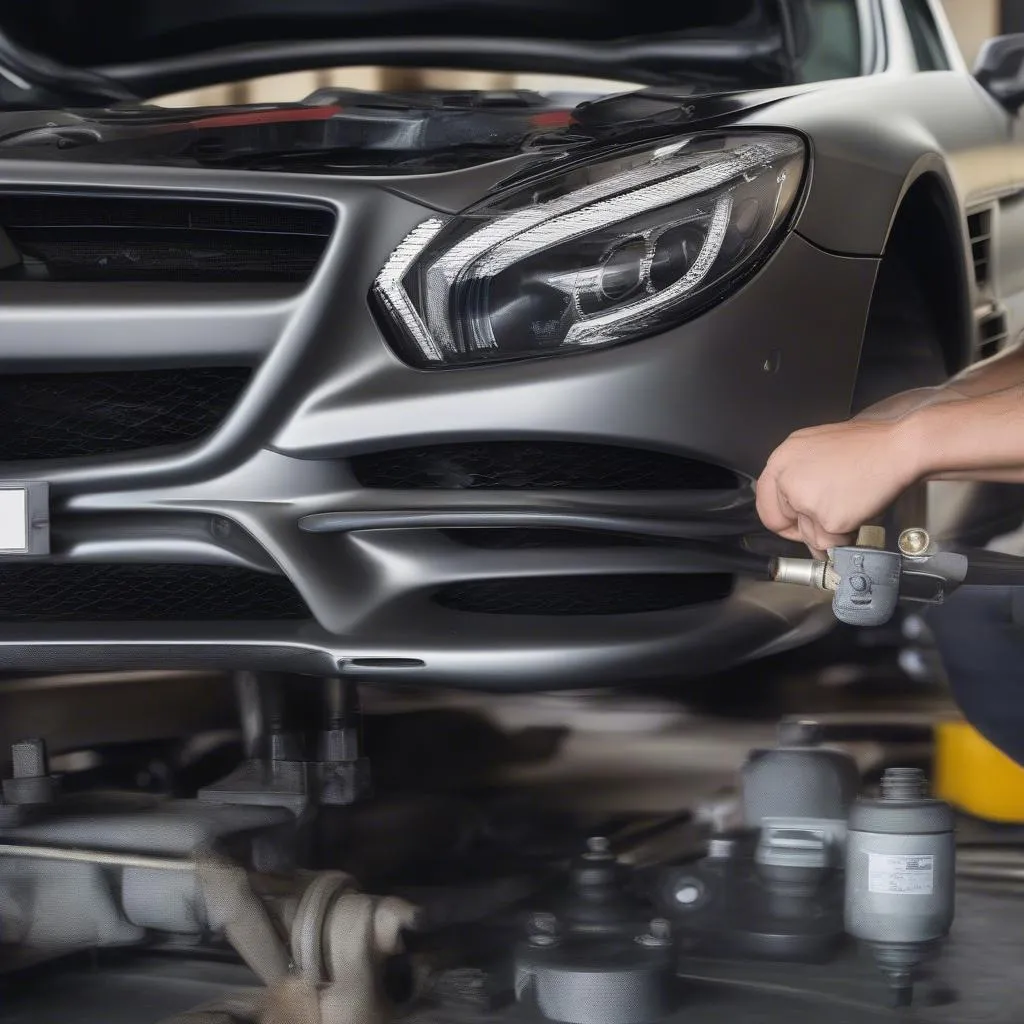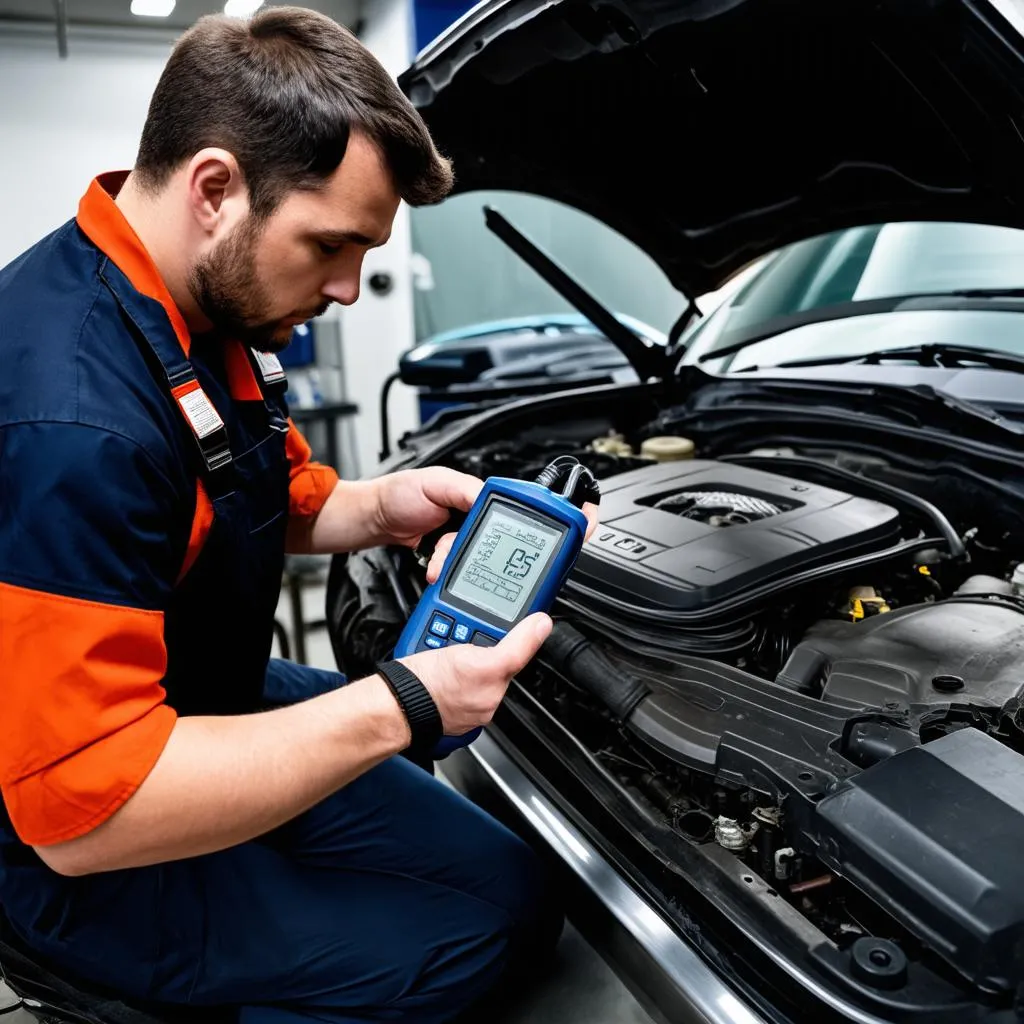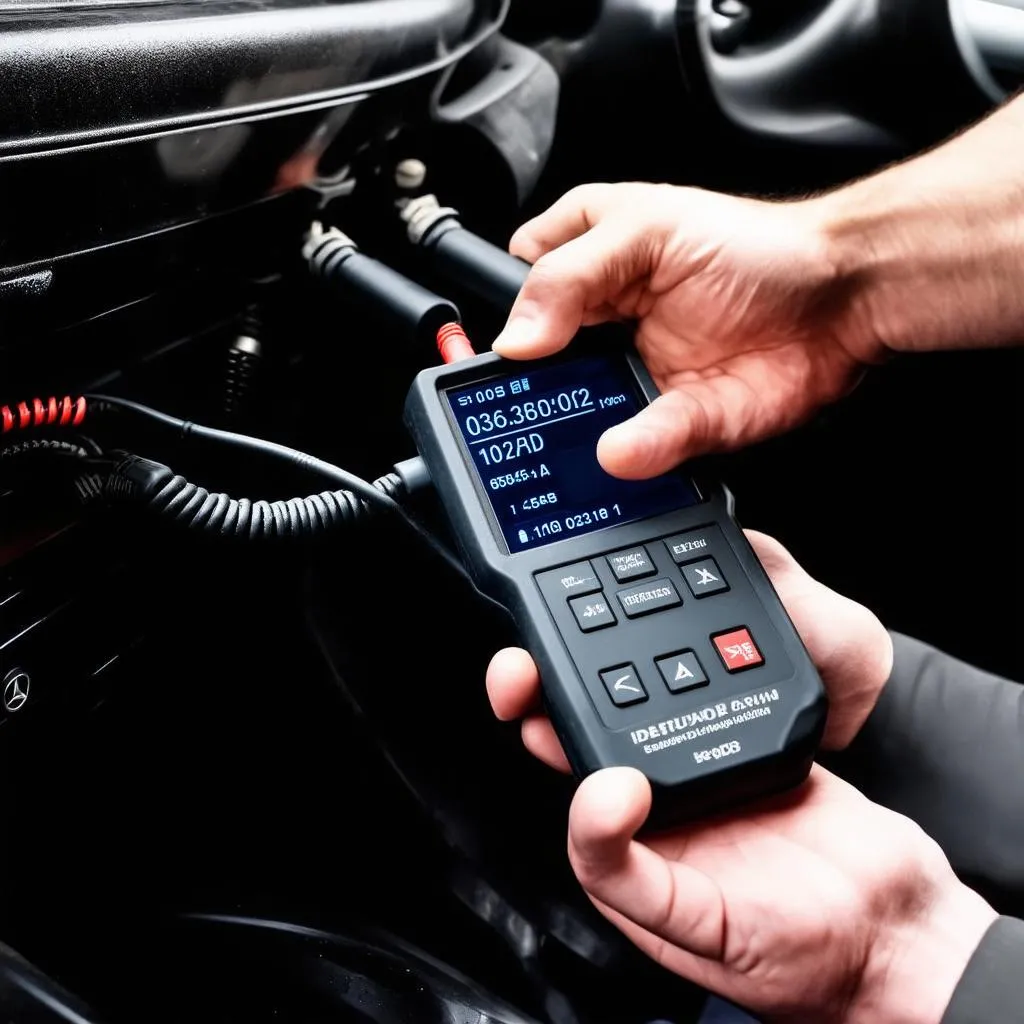If you’re experiencing a bumpy ride in your 2005 Mercedes SL500, chances are there’s an issue with the ride control system. While a luxurious ride is a hallmark of the SL500, a malfunctioning ride control system can quickly take away from the joy of driving this iconic roadster. But don’t worry, this guide will cover everything you need to know about the cost of fixing ride control issues in your 2005 Mercedes SL500.
What Causes Ride Control Problems in a 2005 Mercedes SL500?
There are several components within the ride control system that can cause problems, leading to a less than smooth driving experience. Here are some of the most common culprits:
ABC (Active Body Control) System
The SL500 utilizes a sophisticated hydraulic suspension system known as Active Body Control. This system uses hydraulic fluid and pressure to adjust the suspension in real-time, providing a smooth ride and exceptional handling. However, leaks, failing pumps, and faulty sensors within the ABC system can all lead to problems.
Shocks and Struts
Even though the SL500 boasts advanced hydraulics, traditional shocks and struts still play a vital role. Over time, these components can wear out, leak, or become damaged, impacting ride quality.
Suspension Air Pump
Some SL500 models may be equipped with a suspension air pump that helps to adjust the ride height. A failing pump can cause the vehicle to sit unevenly or make strange noises.
Control Arms and Bushings
Worn-out control arms and bushings, which connect the suspension components to the frame, can also contribute to a rough ride and affect handling.
How to Identify a Faulty Ride Control System
Early detection is key to preventing more costly repairs down the road. Here are some tell-tale signs that your 2005 Mercedes SL500 may have a ride control issue:
- Warning Lights: Keep an eye on your dashboard. A lit “ABC” or “Suspension” warning light is a clear indication of a problem.
- Uneven Ride Height: Notice if your SL500 sits lower on one side or takes longer than usual to level out.
- Rough Ride: Experiencing excessive bouncing or a harsher ride than usual is a strong indicator of a suspension problem.
- Fluid Leaks: Look for signs of fluid leaks around the shocks, struts, and under the car.
- Strange Noises: Clunking, banging, or groaning sounds coming from the suspension, especially when going over bumps, can point to faulty components.
Tools and Equipment You Might Need
If you are comfortable with DIY car repairs, you might consider tackling some ride control fixes yourself. Here are some tools that might come in handy:
- Car Diagnotic Tool: A reliable car diagnostic tool, such as those offered by CARDIAGTECH, can help you read and understand the error codes being thrown by your SL500’s onboard computer. This can provide valuable insight into the root cause of the problem.
- Jack and Jack Stands: Safety first! You’ll need a sturdy jack and jack stands to lift and secure your SL500 when working on the suspension.
- Wrench and Socket Set: A comprehensive set of wrenches and sockets is essential for removing and installing suspension components.
- Torque Wrench: A torque wrench is crucial for tightening bolts to the correct specifications, preventing damage and ensuring proper operation.
- Hydraulic Fluid: If you’re dealing with an ABC system leak, you’ll need the correct hydraulic fluid to top it off or flush and refill the system.
Troubleshooting and Repair Options
While a professional mechanic is best equipped to diagnose and repair complex ride control issues, here’s a general overview of common repair steps:
-
Diagnose the Problem: The first step is accurately identifying the faulty component(s) within the ride control system. This often involves visually inspecting the system, checking for leaks, and using a diagnostic tool to read error codes.
-
Address ABC System Issues (if applicable): If the diagnosis points to the Active Body Control system, repairs might involve replacing faulty sensors, accumulators, or even the entire ABC pump. This can be a costly repair, so obtaining multiple quotes is advisable.
-
Replace Worn Shocks and Struts: Worn shocks and struts should be replaced in pairs (both front or both rear). You’ll need to properly compress and install the new units to ensure proper ride height and alignment.
-
Inspect and Replace Suspension Air Pump (if applicable): If your SL500 has a suspension air pump, listen for unusual noises and check for leaks. A failing pump will need to be replaced to restore proper ride height functionality.
-
Address Control Arms and Bushings: Worn control arms and bushings should be replaced to eliminate clunking noises and restore proper handling.
2005 Mercedes SL500 Ride Control Cost to Fix: What to Expect
Repair costs can vary widely depending on the specific problem, the cost of parts, and labor rates in your area. Here’s a rough estimate of what you might expect to pay:
- ABC System Repairs: $1,000 to $5,000 or more for major repairs, including pump replacement.
- Shock and Strut Replacement: $500 to $1,500 per pair, depending on the brand and type of shocks or struts used.
- Suspension Air Pump Replacement: $500 to $1,200 depending on the brand and model.
- Control Arm and Bushing Replacement: $300 to $800 per side, depending on the extent of the work.
 Mercedes SL500 ABC System
Mercedes SL500 ABC System
Frequently Asked Questions (FAQs)
Here are answers to some common questions about 2005 Mercedes SL500 ride control costs:
Q: Can I drive my SL500 with a ride control problem?
A: While you might be able to drive short distances, it’s not recommended to ignore ride control issues. Driving with a faulty system can worsen the damage, lead to unsafe handling, and result in more expensive repairs.
Q: How often should I service my SL500’s ride control system?
A: It’s a good idea to have your mechanic inspect the ride control system at every service interval, typically every 10,000 to 15,000 miles.
Q: Are aftermarket ride control parts a good option?
A: While aftermarket parts can be more affordable, it’s generally recommended to use genuine Mercedes-Benz parts for critical suspension components. This ensures compatibility, quality, and longevity.
 Mercedes SL500 Suspension Repair
Mercedes SL500 Suspension Repair
Conclusion
A smooth and controlled ride is part of the allure of owning a Mercedes SL500. Addressing ride control problems promptly is crucial to ensure a safe and enjoyable driving experience. While repairs can be costly, understanding the potential causes and taking preventative measures can help keep your SL500 gliding down the road with style and grace for years to come.


